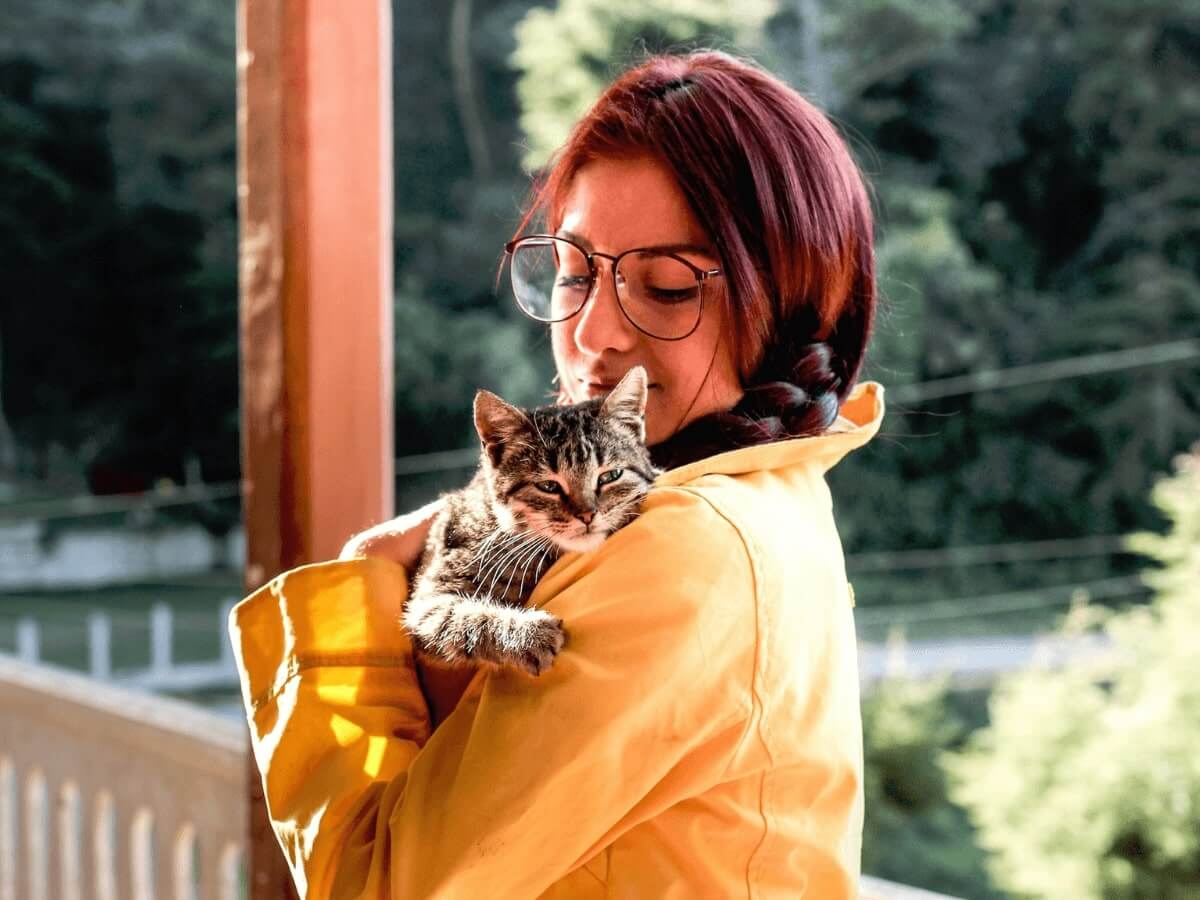Cats do attack rabbits. They show a lack of affection towards “everybunny” they come across.
Cats and rabbits are two popular pets that many people choose to keep in their homes. However, when it comes to their interactions, it is important to understand the dynamics between the two. While cats are known for their playful and curious nature, they may not always exhibit a friendly attitude towards rabbits.
In fact, cats may attack rabbits due to their instinctual predatory behavior and lack of affinity towards “everybunny” they encounter. This article delves into the reasons behind cats’ aggression towards rabbits, the potential risks, and provides some tips for ensuring the safety and well-being of both pets in a multi-pet household.
Contents
- 1 Why Do Cats Attack Rabbits?
- 2 Understanding Cat-rabbit Dynamics
- 3 Factors Influencing Cat-rabbit Interactions
- 4 Recognizing Aggression Versus Playfulness
- 5 Managing Cat-rabbit Interactions
- 6 Training Cats And Rabbits To Coexist Peacefully
- 7 Creating A Harmonious Multi-species Household
- 8 Frequently Asked Questions On Do Cats Attack Rabbits? They Don’t Seem To Love “everybunny!”
- 9 Conclusion
Why Do Cats Attack Rabbits?
Predatory instincts: Cats are natural predators with strong hunting instincts. They have evolved to chase and capture prey, including rabbits. Their instinctual behavior is a major factor in attacking rabbits.
Prey drive: Cats have a strong prey drive, which is triggered by the movement of rabbits. They see them as potential prey and respond accordingly. The quick movements and small size of rabbits can activate a cat’s hunting instinct.
Unfamiliarity: When cats encounter rabbits for the first time, they may view them as unfamiliar or potential threats. This can lead to defensive or aggressive behavior, including attacking.
Cats attacking rabbits is a result of their natural instincts and the way they perceive rabbits. Understanding these factors can help prevent potential conflicts between cats and rabbits.
Understanding Cat-rabbit Dynamics
Understanding the dynamics between cats and rabbits is crucial when considering whether they attack each other. Cats have natural predatory instincts, which can make them view rabbits as potential prey. However, it is important to note that not all cats exhibit this behavior. The level of aggression may depend on the individual cat’s personality, previous experiences, and socialization. Coexistence between cats and rabbits can be challenging but not impossible.
When introducing a rabbit to a household with a cat, it is essential to provide a safe and controlled environment. Supervised interactions and gradual introductions can help establish a sense of comfort and familiarity for both animals. Positive reinforcement-based training can also be implemented to discourage aggressive behaviors and promote harmonious cohabitation.
It is imperative to understand that while cats might be predators by nature, they can also form companionship with rabbits. Building a bond between them requires patience, consistency, and proper introduction techniques. In some cases, cats and rabbits can peacefully coexist within the same household, proving that love can conquer the natural instincts of these animals.
Factors Influencing Cat-rabbit Interactions
There are several factors that can influence interactions between cats and rabbits. One of the main factors is the environment and territoriality of both animals. Cats are known to be territorial, and if they feel that their space is being invaded by a rabbit, they may react aggressively. Similarly, rabbits also have their own territory and may not take kindly to a cat encroaching on their space.
Socialization and familial bonds also play a role in cat-rabbit interactions. If a cat has been previously socialized with a rabbit and has positive experiences with them, they are more likely to tolerate their presence. On the other hand, if a cat has not been exposed to rabbits or has had negative experiences with them, they may be more inclined to attack.
Individual cat and rabbit personalities also come into play. Some cats may have a high prey drive and see rabbits as potential prey, while others may be more laid-back and show no interest in them. Similarly, rabbits have different personalities, with some being more confident and assertive, while others are more timid and prone to flee.
Recognizing Aggression Versus Playfulness
Understanding a cat’s body language and vocal cues is crucial in determining whether they are being aggressive or playful. Cats use a combination of signals to communicate their intentions, and recognizing these cues can help prevent misunderstandings.
Body Language And Vocal Cues
Cats display various body language cues when expressing aggression or playfulness. Aggressive cats may exhibit dilated pupils, arched backs, and puffed-up fur. They may also hiss, growl, or make intense vocalizations. On the other hand, playful cats typically have relaxed bodies, upright tails, and engage in gentle play-bites and batting movements. Their vocalizations tend to be softer and more relaxed.
Contextual Clues
The context surrounding the interaction can provide important clues. Aggression often arises during territorial disputes, while playfulness typically occurs during certain times, such as after meals or waking up from a nap. Observing the environment and the cats’ behavior patterns can help differentiate between aggression and playfulness.
Signs Of Distress
It’s essential to be aware of signs of distress in both cats involved. These may include flattened ears, tail flicking, excessive scratching, or attempts to escape. If any of these signs are present, it’s important to intervene and separate the cats to prevent escalation.
Managing Cat-rabbit Interactions
Wondering how to manage cat-rabbit interactions? Discover if cats attack rabbits and why they might not get along in this insightful guide. Find practical tips and strategies to create a harmonious environment for your feline and bunny friends to coexist peacefully.
Safe Introduction Strategies
When introducing cats and rabbits, it is important to prioritize safety and minimize the risk of aggression. Firstly, supervision is crucial during the initial meetups to ensure both animals are comfortable in each other’s presence. Gradual introductions are recommended, using a separation technique whereby both animals are kept in separate enclosures but can still observe each other.
Environmental Enrichment
Creating a stimulating environment for both cats and rabbits is essential for their overall well-being and can help prevent aggressive behaviors. Providing enrichment activities such as interactive toys, scratching posts, and hiding places can redirect a cat’s prey drive and discourage chasing or attacking the rabbit. Additionally, the rabbits’ enclosure should have plenty of hiding spots and elevated areas for them to feel safe.
Training Cats And Rabbits To Coexist Peacefully
Positive reinforcement training: The key to training cats and rabbits to coexist peacefully is through positive reinforcement training. This involves rewarding good behavior and ignoring or redirecting unwanted behavior. Both cats and rabbits can be trained using treats, praise, and clicker training.
Gradual familiarization: It’s important to introduce the cat and rabbit to each other gradually. Start by allowing them to sniff each other’s scents and gradually move on to supervised interactions in separate enclosures. This will help them get used to each other’s presence without feeling threatened.
Building trust and boundaries: As the cat and rabbit continue to interact, it’s crucial to establish trust and set clear boundaries. Provide hiding places and escape routes for the rabbit and ensure the cat has its own space. Create a safe and secure environment to minimize the chances of negative encounters.
By following these guidelines, you can gradually help your cat and rabbit develop a harmonious relationship. Remember to be patient and consistent in your training efforts, as it may take time for them to fully accept and get along with each other.
Creating A Harmonious Multi-species Household
Discover the secrets to creating a harmonious multi-species household. If you’re wondering whether cats attack rabbits, find out why not all felines embrace their furry “everybunny” friends. Learn how to create a peaceful coexistence between these two species.
| Creating a Harmonious Multi-Species Household | |
|---|---|
| Subheading: Monitoring and addressing conflicts | Subheading: Equal attention and care |
| Rabbits and cats can coexist peacefully with proper monitoring and conflict management. It is important to observe their interactions closely to identify any signs of aggression or tension. If conflicts arise, it is crucial to address them promptly to prevent escalation. Steps can be taken such as providing separate spaces for each pet to retreat to or implementing gradual introductions using scent swapping techniques. Additionally, ensuring that each animal receives equal attention, affection, and care from their human companions helps foster a harmonious environment. This can be achieved by setting aside dedicated playtime, feeding sessions, and grooming sessions for each pet individually. By providing a safe and enriched environment that meets the physical and mental needs of both rabbits and cats, pet owners can promote a more peaceful cohabitation. | Both rabbits and cats require equal attention and care from their human companions. By devoting time and effort to each pet, pet owners can prevent feelings of neglect or jealousy from arising. Regular play sessions and individual attention help strengthen the bond between the pet and their caregiver. It is important to provide each pet with their own designated areas for eating, sleeping, and playing to reduce any potential conflicts. Additionally, ensuring that both rabbits and cats have access to plenty of mental and physical stimulation can minimize boredom and destructive behavior. By maintaining a balanced and attentive approach to caring for both pets, pet owners can foster a sense of equality and prevent potential tensions in a multi-species household. |

Credit: www.reddit.com
Frequently Asked Questions On Do Cats Attack Rabbits? They Don’t Seem To Love “everybunny!”
Why Is My Cat Attacking My Bunny?
Cats may attack bunnies because of their hunting instincts. Keep them separate and provide proper supervision to ensure their safety.
Do All Cats Attack Rabbits?
Not all cats attack rabbits. It depends on the individual cat’s temperament and upbringing. Some cats may be friendly towards rabbits, while others may see them as prey. It’s important to introduce them slowly and supervise their interactions to ensure everyone’s safety.
Will My Cat Try To Kill My Rabbit?
Yes, cats may kill rabbits. It is important to introduce them slowly and supervise their interactions to ensure their safety.
Do Cats Attack Wild Rabbits?
Cats may attack wild rabbits due to their natural hunting instincts. Their predatory behavior can put wild rabbits at risk.
Conclusion
To conclude, cats and rabbits may not always see eye to eye. While it is not inherent for cats to attack rabbits, there are instances where territorial instincts or predatory drives can lead to aggression. It is essential to carefully introduce and monitor their interactions to ensure the safety of all animals involved.
By understanding their natural behaviors and providing appropriate supervision, it is possible for cats and rabbits to peacefully coexist.

Katie Lindsey is a passionate cat lover and founder of Cats Solution, a comprehensive resource for all things feline. With a lifelong love for cats and extensive knowledge in their care and behavior, she provides expert advice and solutions to cat owners. Through her website, Katie fosters a supportive community where cat enthusiasts can find guidance and heartwarming stories. A dedicated advocate for animal welfare, Katie also promotes responsible pet ownership and adoption. Join her on this purr-fect journey celebrating the joy of feline companionship.



